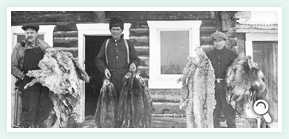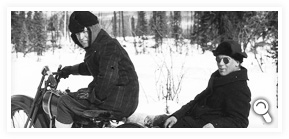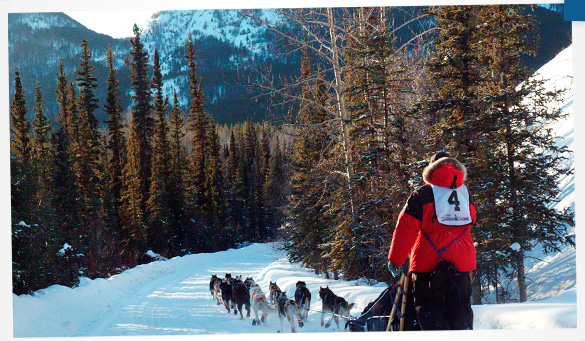
The 1600-km Yukon Quest International Sled Dog Race.
Yukon Government photo

Living in a cold climate requires skill and ingenuity, particularly for people living on the land. Severe temperatures, little or no daylight and scarce game are just some of the challenges they face.
Deep snow and unpredictable ice can make winter travel difficult. Over the years, people have found many ways to get around during the winter — some more practical than others — including caribou-skin toboggans, skis, dog sleds, snowshoes, sleighs, airplanes, snowmobiles, cars and even motorcycles.
The skills and stamina necessary for survival were well suited to athletic competition, and endeavours like dog-sledding, snowshoeing and shooting eventually developed into organised sports. Dog-sled races continue to be a lively component of winter sports throughout the territory.
The Fur Trade
In early winters, First Nations hunters trapped lynx, fox, wolf and wolverine, both for their fur and for food. With the growth of the fur trade in the 19th century, trapping became a source of income for First Nations and non-First Nations people.
(Right) Men with furs ready for shipment at the Taylor & Drury post, Ross River, 1928.
Yukon Archives, Claude and Mary Tidd fonds, #8437

A man in parka sawing wood, probably in Carmacks, ca. 1915-1921.
Yukon Archives, Back and Bee family fonds, 90/19 #161
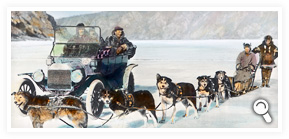
A Model T touring car and a dog team on the river ice at Dawson City, ca. 1908-15.
Yukon Archives, Martha Louise Black fonds, #3244
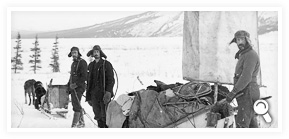
Kluane Lake, ca. 1905.
Yukon Archives, E.J. Hamacher fonds (Margaret and Rolf Hougen collection), 2002/118 #959
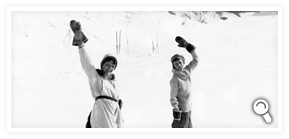
Honey Ryder and her sister Mary Tidd on snowshoes at Fortymile, 1932.
Yukon Archives, Claude and Mary Tidd fonds, #7995
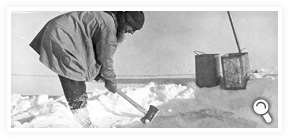
Claude Tidd chops a hole in the ice for water, ca. 1938.
Yukon Archives, Claude and Mary Tidd fonds, #8121
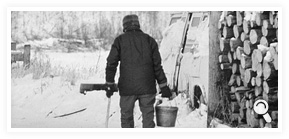
Selkirk Indian Band elder Jack Sam hauls water, Pelly Crossing, 1987.
Yukon Archives, Selkirk First Nation fonds, #9656
